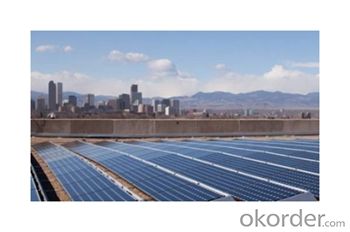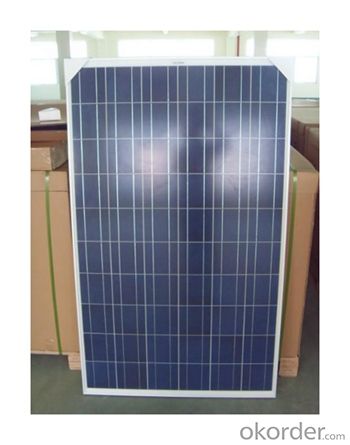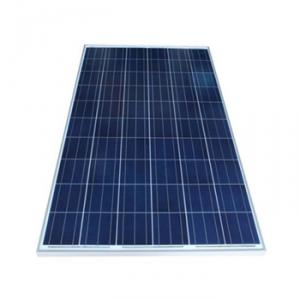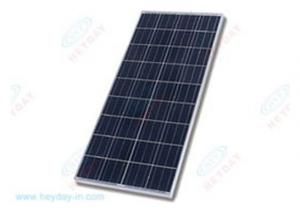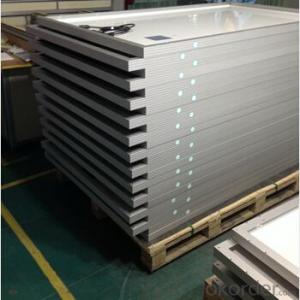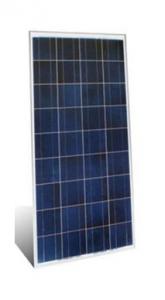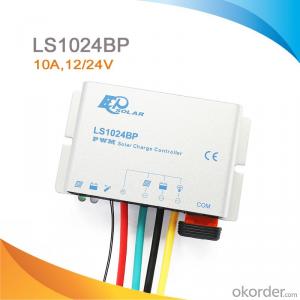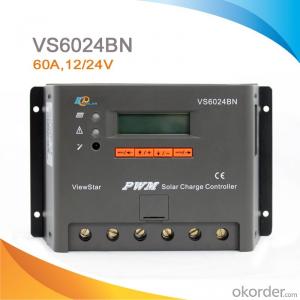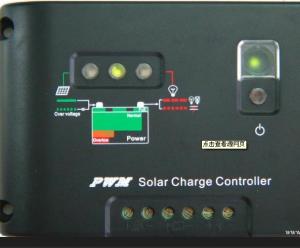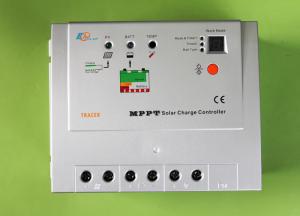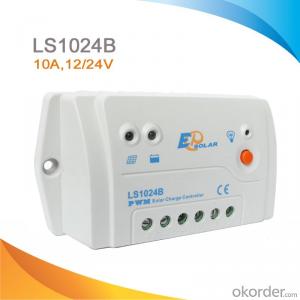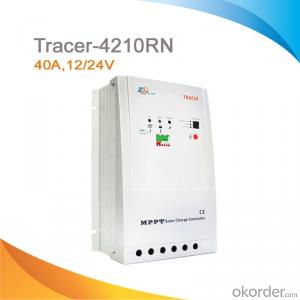Solar Panels Controllers for Poly-Crystalline 245W 156*156 Solar Modules
OKorder Service Pledge
OKorder Financial Service
You Might Also Like
Solar Module Descriptions:
Solar Power Modules (known as Photovoltaics - PV) can generate electricity for your home or business, either as part of a stand-alone solar power system, or for buildings already connected to the local electricity network.
PV systems use the most abundant energy source on the planet, solar radiation, to generate electricity. They are silent, consume no fuel and generate no pollution. They also contribute to the reduction of greenhouse gas emissions; a 2kW PV system on a house will prevent the emission of about 40 tonnes of CO2 during its projected 30 year lifetime. Furthermore, the use of PV will reduce your electricity bills and exposure to fluctuating and steadily rising electricity prices.
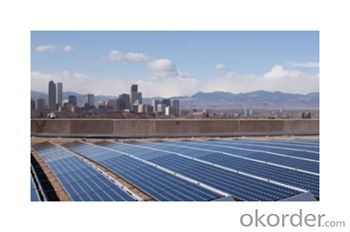
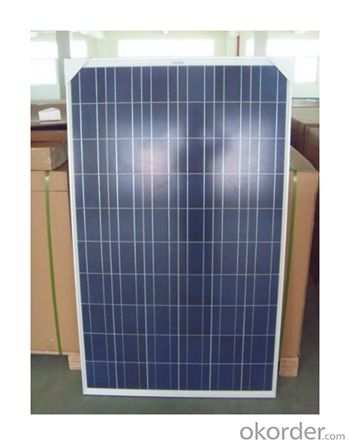
Electrical Characteristics
Max-power (W) | 245 |
Max-Power Voltage (V) | 30.40 |
Max-Power Current (A) | 8.06 |
Open-Circuit Voltage (V) | 37.50 |
Short-Circuit Current (A) | 8.66 |
Mechanical Characteristics
Cable type, Diameter and Length | 4mm2, TUV certified, 1000mm |
Type of Connector | Compatible with MC4 plug |
Arrangement of cells | 6*10 |
Cell Size | 156*156 |
Dimension | 1580*1069*45 |
Weight | 19.5Kg |
Glass, Type and Thickness | High Transmission, Low Iron, Tempered Glass 3.2mm |
Features
Guaranteed positive tolerance 0/+5w ensures power output reliability
Strong aluminum frames module can bear snow loads up to 5400Pa and wind loads up to 2400Pa.
Excellent performance under low light environments (mornings evenings and cloudy days)
12 years for product defects in materials and workmanship and 25 years for 80% of warranted minimum power.
Certifications and standards: IEC 61215.
Manufactured according to International Quality and Environment Management System (ISO9001, ISO14100).
FAQ
Q: Do you have any MOQ limit?
Our MOQ is 200 pieces.
Q: How long is the warranty period for the solar modules?
15 years 90% of its nominal power rating.
25 years 80% of its nominal power rating
Q: What is PV & how does it work?
PV stands for photovoltaic. Photo = Light and Voltaic = Electricity. A solar cell converts light to electricity.
A solar cell is made of silicon. Computer chips are made of this same material. Basically, when light strikes the surface of a solar cell some of it is absorbed into the silicon. This light energy bumps the electrons loose and causes energy to flow.
By packaging approximately 36 solar cells together a solar panel or a solar module is created. When you have more then one solar panels you create a solar array.
- Q: Can a solar controller be used with a solar-powered irrigation system?
- Yes, a solar controller can be used with a solar-powered irrigation system. A solar controller helps regulate the flow of electricity from the solar panels to the irrigation system, ensuring optimal performance and preventing overcharging or undercharging of the batteries. It also allows for automation and scheduling of irrigation cycles, optimizing water usage and reducing energy consumption.
- Q: Can a solar controller be used with a solar-powered educational institution?
- Yes, a solar controller can be used with a solar-powered educational institution. A solar controller is an essential component of a solar power system as it regulates and optimizes the charging and discharging of batteries. In an educational institution that relies on solar power, a solar controller would help ensure efficient energy management, protect the batteries from overcharging or discharging, and extend their lifespan.
- Q: How does a solar controller handle variations in solar panel current?
- A solar controller handles variations in solar panel current by regulating the amount of power flowing from the solar panels to the batteries or load. It monitors the current output of the solar panels and adjusts the charging parameters accordingly to prevent overcharging or undercharging of the batteries. This ensures optimal utilization of the solar energy and extends the lifespan of the battery system.
- Q: Can a solar controller be used with different types of solar charge controllers?
- No, a solar controller generally cannot be used with different types of solar charge controllers. Each type of solar charge controller is designed to work with a specific type of solar panel technology and voltage range. For example, there are different charge controllers for solar panels that use crystalline silicon, thin-film, or amorphous silicon technologies. Additionally, different charge controllers have different maximum voltage and current ratings. Therefore, it is important to choose a solar controller that is specifically compatible with the type of solar charge controller being used to ensure optimal performance and safety.
- Q: Are solar controllers weatherproof?
- Yes, solar controllers are typically weatherproof. Solar controllers are designed to withstand outdoor conditions, including exposure to rain, snow, extreme temperatures, and other weather elements. They are constructed with durable materials and often have an IP (Ingress Protection) rating that indicates their level of protection against dust and water. However, it is essential to check the specific product specifications and IP rating of a solar controller to ensure it is suitable for the intended outdoor application.
- Q: What is the typical efficiency rating of a solar controller?
- The efficiency rating of a solar controller typically varies depending on the specific model and brand, with most modern controllers having an efficiency rating ranging from 95% to 98%. This indicates their ability to convert 95% to 98% of received solar energy into usable power for battery charging or device powering, while the remaining percentage is typically lost as heat during conversion. It should be noted that factors such as temperature, system voltage, and component quality can affect the efficiency of a solar controller.
- Q: Can a solar controller be used with solar panels that are connected to a grid-tie inverter?
- Yes, a solar controller can be used with solar panels that are connected to a grid-tie inverter. The primary function of a solar controller is to regulate the charging of a battery bank in off-grid solar systems. However, in cases where solar panels are connected to a grid-tie inverter, a solar controller can still be beneficial. While a grid-tie inverter is primarily responsible for converting the DC power generated by solar panels into AC power for use in the electrical grid, a solar controller can help optimize the performance and efficiency of the solar panels. It can regulate the voltage and current coming from the panels, ensuring that they are operating at their peak power point, regardless of fluctuations in sunlight intensity or other external factors. By using a solar controller in conjunction with a grid-tie inverter, you can potentially maximize the energy output of your solar panels and optimize the overall performance of your solar energy system. Additionally, a solar controller can provide additional features such as overcharge protection and load control, which can help protect your batteries and appliances in the event of power surges or fluctuations. In summary, while a solar controller is not necessary for grid-tie systems, it can still be used to enhance the performance and functionality of solar panels connected to a grid-tie inverter.
- Q: Can a solar controller be used with solar panel monitoring systems?
- Yes, a solar controller can be used with solar panel monitoring systems. A solar controller ensures the optimal charging and protection of the batteries connected to the solar panel system. It regulates the flow of electricity from the panels to the batteries, preventing overcharging and damage. By incorporating a solar controller into the system, the performance and efficiency of the solar panel monitoring system can be enhanced, providing accurate and reliable data on solar panel output and performance.
- Q: What is the role of a solar controller in preventing damage to the solar panels from birds or animals?
- To prevent damage to solar panels from birds or animals, the primary function of a solar controller is to discourage them from landing or nesting on the panels. Various methods are typically employed by solar controllers to achieve this objective. One commonly used technique involves emitting ultrasonic sound waves that are inaudible to humans but unpleasant to birds and animals. These sound waves cultivate an unwelcoming environment around the solar panels, making them less appealing as perching or nesting spots. The solar controller emits these sound waves intermittently, effectively ensuring that the area surrounding the panels remains bird and animal-free. Another approach utilized by solar controllers is the incorporation of visual deterrents, such as reflective surfaces or moving objects. Birds and animals are often frightened off by shiny or reflective surfaces, as they perceive them as potential predators or threats. Integrating these visual deterrents into the design of the solar controller aids in discouraging birds and animals from approaching the panels. Furthermore, solar controllers may also employ physical barriers or netting to obstruct access to the panels. This strategy prevents birds or animals from directly landing on the panels or causing damage with their claws or beaks. These physical barriers are specifically designed to be lightweight and durable, ensuring that they do not impede the performance of the solar panels while effectively safeguarding them against potential harm. To summarize, the primary role of a solar controller in preventing damage to solar panels from birds or animals is to create an environment that is unappealing and inhospitable to these creatures. By employing deterrent mechanisms such as ultrasonic sound waves, visual deterrents, and physical barriers, solar controllers contribute to the preservation and functionality of the solar panels by keeping birds and animals at a distance.
- Q: What is the role of a solar controller in preventing damage to the solar panels from hail or storm events?
- The role of a solar controller in preventing damage to solar panels from hail or storm events is primarily to act as a protective mechanism. Hailstorms and severe storms can pose significant risks to solar panels, and a solar controller plays a crucial role in mitigating these risks. Firstly, a solar controller is responsible for monitoring the weather conditions. It can detect the approach of a hailstorm or severe storm by analyzing data from various sensors and weather forecasting systems. This early detection allows the solar controller to initiate precautionary measures before the storm hits. Once a storm is detected, the solar controller can activate protective mechanisms to safeguard the solar panels. One such mechanism is the ability to automatically tilt the panels to an angle that minimizes the surface area exposed to hail or storm winds. This adjustment reduces the chances of hailstones or debris directly hitting the panels, thereby preventing potential damage. Additionally, solar controllers often have built-in sensors that can detect the impact of hailstones on the panels. If the sensors detect a certain level of impact, the controller can automatically shut down the panels to prevent further damage. This feature is crucial as it prevents the panels from generating electricity during a storm, reducing the risk of electrical surges or short circuits. Furthermore, solar controllers can also activate protective coverings or shields to physically shield the panels from hail or storm-induced damage. These coverings are usually made of durable materials that can withstand the impact of hailstones or debris, providing an additional layer of protection to the panels. Overall, the role of a solar controller in preventing damage to solar panels from hail or storm events is to monitor weather conditions, initiate precautionary measures, adjust panel angles, shut down panels if necessary, and provide physical protection. By performing these functions, solar controllers play a crucial role in ensuring the longevity and efficiency of solar panel systems during adverse weather conditions.
Send your message to us
Solar Panels Controllers for Poly-Crystalline 245W 156*156 Solar Modules
OKorder Service Pledge
OKorder Financial Service
Similar products
Hot products
Hot Searches
Related keywords


